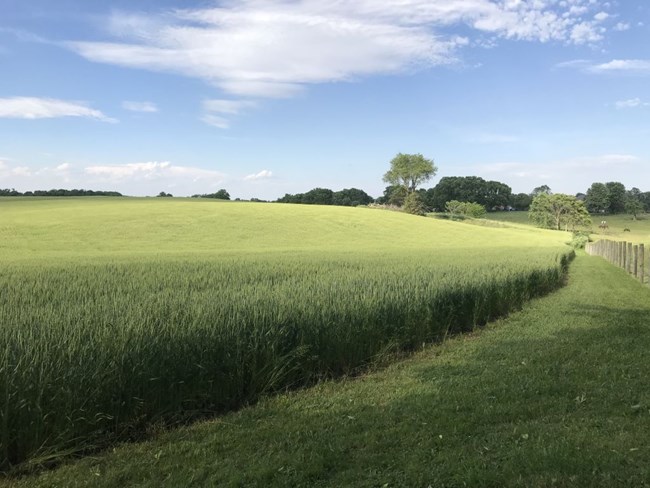Last updated: June 1, 2023
Article
Protecting Farmland and a Strategic River Crossing: Battle of Shepherdstown

Jefferson County Historic Landmarks Commission
Recipient: Jefferson County Farmland Protection Board
Amount: $492,097.00
Acres: 149.60
In the early fall of 1862, residents of Shepherdstown, Virginia reported hearing the pop and roll of artillery fire from nearby Sharpsburg, Maryland, as Union and Confederate armies engaged along the Antietam Creek. The bloodiest day of the Civil War, the battle ended in a tense tactical standoff, leaving both armies battered, and waiting for the other’s next move.
Withdrawing on September 19, Southern soldiers redeployed on the west bank of the Potomac River, east of Shepherdstown, to prevent Union forces from cutting off their retreat. Meanwhile, northern troops deployed nearly 70 pieces of artillery to support the river crossing of Brigadier General George Sykes Division. Attacking the next day, Sykes placed a brigade of U.S. Regulars at the front of his advance. Counter-attacked by six Confederate brigades, the Regulars and their supporting units were forced back over the Potomac.
A small engagement when compared to Antietam, this battle ended the Maryland Campaign and prevented the Union Army from stopping the southern troops withdraw. Returning a year later, Confederate forces would use the ford again to begin their invasion north into Pennsylvania. But this time, from the newly formed Union state of West Virginia.
This 2023 Battlefield Land Acquisition Grant awarded by the National Park Service’s American Battlefield Protection Program supports the Jefferson County Farmland Protection Board efforts to maintain the bucolic character of the battlefield by placing a perpetual conservation easement on fields of alfalfa, hay, and pasture. Conservation easements allow farmers to continue to use their land for agriculture, but also protect it by limiting future development and subdivision of the property.
Battlefield Land Acquisition Grants from the NPS American Battlefield Protection Program empower preservation partners nationwide to acquire and preserve threatened Revolutionary War, War of 1812 and Civil War battlefields. In addition, the program administers three other grants: Preservation Planning Grants, which are open to all sites of armed conflict on American soil, the newly authorized Battlefield Restoration and Battlefield Interpretation Grant programs. This financial assistance generates community-driven stewardship of historic resources at the state, tribal and local levels.
